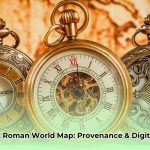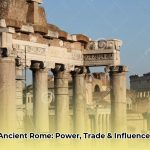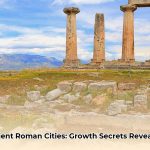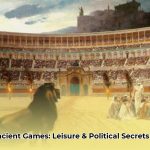The colossal presence of Ancient Rome continues to shape our understanding of civilization, empire, and human ambition. From the thunder of gladiatorial arenas to the meticulous craftsmanship of its aqueducts, the Roman Empire beckons us through time. While texts and artifacts provide invaluable insights, it is through ancient Roman pictures that this magnificent past truly comes alive, offering tangible connections to a world rich in history, power, and everyday life. For more examples, see these Ancient Rome images. In our digital age, the quest for high-quality, authentic visual representations of Rome leads us to a fascinating array of online archives. This article offers a comprehensive guide to sourcing and critically understanding these vital Roman history visuals, navigating the strengths, limitations, and unique contributions of leading platforms such as Getty Images, iStockphoto, Unsplash, Pixabay, and Shutterstock. Our objective is to empower researchers, educators, and enthusiasts to effectively uncover the visual narrative of this foundational ancient civilization.
Finding Your Rome: Navigating the Digital Visual Landscape
The accessibility of historical imagery in the digital era is unprecedented, yet not without its challenges. While masses of ancient Roman images are readily available, the integrity of their metadata, the ease of discovery, and the overall fidelity vary considerably across platforms. Understanding these nuances is crucial for any serious visual exploration of Ancient Rome.
Getty Images: The Gold Standard for Professional Antiquity
For those seeking unparalleled quality and curatorial depth in ancient Roman pictures, Getty Images stands as a premier destination. Boasting an extensive collection, including over 58,000 meticulously cataloged photographs and illustrations related to the Roman Empire, Getty is a cornerstone for professional-grade imagery. Their commitment to high resolution, crisp detail, and often expert contextualization ensures that each image is not merely a picture but a piece of verifiable history. Users benefit from sophisticated search filters, detailed descriptive data, and robust tagging that allow for precise academic inquiry or high-stakes creative projects. While a premium subscription or per-image licensing fee applies, the investment often pays dividends in reduced research time and guaranteed visual excellence. For broad selection, superior organization, and trusted provenance, Getty Images remains a top recommendation for serious engagement with Roman visual culture.
iStockphoto: A Deep Dive for Comprehensive Roman Imagery
As a robust complement to Getty Images, its sister platform, iStockphoto, offers an even more expansive repository, with over 77,500 images categorized under Ancient Rome. This vast library provides an incredible range of visually striking content, from sweeping landscapes of Roman architecture to intimate close-ups of ancient Roman art and artifacts. iStockphoto maintains high standards for image quality and resolution, delivering visuals that can enrich any publication or presentation. Its powerful search capabilities and comprehensive descriptive data empower users to efficiently pinpoint specific historical elements, whether depictions of a formidable roman legion or the intricate details of an ancient Rome painting. Access is generally straightforward, following a subscription or credit-based model, making iStockphoto an indispensable asset for comprehensive visual explorations of the Roman Empire without compromising quality.
Unsplash and Pixabay: The Free-Tier Frontier of Roman Visuals
For personal projects, educational materials, or quick visual enhancements where budget is a primary concern, Unsplash and Pixabay offer accessible alternatives for ancient Roman pictures. Unsplash provides a user-friendly interface but often falls short on historical specificities, with less efficient search functionality that can hinder the discovery of precise historical imagery. Its tagging tends to be broad, meaning a search for ancient room might yield anything from a modern interior to a genuine Roman ruin. Pixabay, while boasting a significant image count for Ancient Rome, frequently lacks the comprehensive descriptive data and meticulous curation found on commercial platforms. Imagine the frustration of sifting through thousands of images where captions are sparse, making targeted searches for ancient Rome people or specific architectural marvels remarkably challenging. While these platforms offer royalty-free images, the variable quality and often sparse metadata mean they are better suited for general visual needs rather than in-depth historical research requiring precise identification and context.
Shutterstock: Navigating the Gated Visual Community
Shutterstock, a significant player in the stock photo industry, undoubtedly offers a high volume of quality ancient Roman pictures. Its collection includes high-resolution images across diverse themes of Roman history, from gladiators in the Colosseum to detailed archaeological finds. However, users often encounter access protocols, such as visual and audio verification steps, that can disrupt workflow and feel unnecessarily cumbersome. This “Fort Knox” approach, while possibly a security measure, can be a deterrent for researchers and content creators seeking efficient content acquisition. Despite these potential hurdles, Shutterstock’s collection, operating on a subscription-based model, can be valuable for its sheer volume and generally good image quality once access is successfully granted.
Beyond the Image: Interpreting Ancient Roman Visuals
Even after successfully sourcing ancient Roman pictures, the journey of understanding has only just begun. Visuals from this era are rarely mere depictions; they are carefully constructed narratives, laden with symbolism, propaganda, and artistic conventions. Critically interpreting these images is paramount for accurate historical comprehension.
The Nuance of Sculpted Faces: Realism and Idealism
Roman portraiture, frequently lauded for its apparent realism, presents a complex interplay between genuine physical likeness and symbolic representation. Features like wrinkles, specific hairstyles, or even the set of a jaw in sculpted busts were not solely physical attributes but powerful visual codes. These aspects could convey a subject’s wisdom, maturity, civic duty, or status within the Roman society, often adhering to prevailing aesthetic ideals or political messaging. For instance, the classical art tradition, heavily influenced by Greek aesthetics, often emphasized idealized forms, leading to a blend of individual features with archetypal beauty. The challenge for the modern viewer is to discern how much of what we see is a factual portrayal of an individual versus an idealized construction of character designed for public consumption.
Emperors and the Art of Image Control
The visual representation of emperors stands as a powerful testament to the deliberate control over public image. Consider Augustus, the first Roman emperor: his portraits consistently depicted him with youthful, almost ageless features, irrespective of his actual chronological age. This meticulously curated image projected an aura of vigor, stability, and divine favor, disseminated widely across the vast Roman Empire through countless statues and coins. Such iconic images were potent instruments of propaganda, meticulously crafted to reinforce authority and unify a diverse populace, rather than merely reflecting his physical reality. Understanding how ancient Roman people were portrayed, especially figures of immense power, provides profound insights into the deep connection between art, political strategy, and social control in Roman history.
Echoes of Greece and Vignettes of Daily Life
Roman art was profoundly shaped by the cultural and artistic innovations of Greece. Roman artists did not merely imitate; they intelligently adapted Greek forms, integrating classical ideals and Greek mythology into their own distinct artistic expressions. This cultural exchange resulted in a powerful Roman aesthetic that combined Greek elegance with Roman pragmatism and grandeur. Furthermore, Roman art extends far beyond imperial portraits. Mosaics, frescoes, and relief carvings offer vivid, invaluable visual resources into the daily lives of ordinary Romans. These depictions capture scenes of bustling markets, domestic interiors, agricultural practices, military campaigns, and religious rituals, providing a holistic glimpse into the values, beliefs, and social structures of the time. These less formal depictions offer a counterpoint to the official imperial art, revealing the multifaceted history of Rome.
Beyond Stereotypes: Embracing Roman Ethnic Diversity
A common contemporary pitfall is to narrowly define Ancient Roman people by a singular, often Mediterranean, stereotype. The Roman Empire was a vast, sprawling entity, a genuine melting pot of diverse populations that encompassed individuals from various regions of Northern Europe, the Middle East, North Africa, and beyond. This immense geographical spread ensured a rich tapestry of physical features, from those with fairer complexions and lighter hair to individuals with darker skin tones and distinct facial structures. When considering how to portray ancient Roman people, it is imperative to acknowledge and embrace this inherent diversity, moving beyond simplistic or uniform portrayals often perpetuated in popular media. Accurate historical imagery must reflect the true cosmopolitan nature of Roman society.
The Echoes of Inquiry: What Our Searches Say About Rome
The keywords people use when searching for ancient roman pictures or Ancient Rome people are more than just queries; they are digital footprints that offer fascinating insights into modern collective curiosity about this ancient civilization. These search patterns reveal which facets of Roman life resonate most deeply with contemporary audiences.
The Hierarchy of Curiosity: From Emperors to Commoners
Search trends frequently highlight a pervasive interest in the hierarchical and social structures of Roman society. Queries often focus on the powerful Patrician elite, the numerous Plebeian commoners, or the complex lives and roles of enslaved individuals. This suggests a desire to understand not only the grand narratives of emperors and conquests but also the intricate social dynamics that underpinned the Roman Empire. Are we drawn more to the opulence of Roman villas, the resilience of the common person enduring daily life, or the stark realities of enslaved labor? The diversity of searches indicates a nuanced appreciation for the multifaceted nature of Roman society and its enduring complexities.
Military Might and Engineering Marvels: Enduring Fascination
The formidable prowess of the Roman military and their astounding architectural and engineering feats consistently captivate modern audiences. Search terms frequently revolve around roman legions on campaign, the strategic brilliance of aqueducts and Roman roads, and the monumental scale of structures like the Colosseum or the Pantheon. This intense fascination underscores humanity’s enduring interest in Roman innovation, organizational genius, and the practical application of advanced knowledge. This interest often extends to exploring how modern architects and engineers might glean wisdom from ancient techniques for sustainable construction and urban planning, bridging the gap between historical ingenuity and contemporary challenges. Such searches celebrate the profound impact of classical architecture and engineering on the built world.
The Fall of an Empire: A Persistent Question
The decline and eventual fall of the Western Roman Empire remains one of history’s most compelling and debated topics. This intellectual curiosity is vividly mirrored in search trends. Queries often explore contributing factors such as barbarian invasions, internal political strife, rampant corruption, economic woes, and even environmental changes. This indicates a holistic understanding among searchers that the empire’s downfall resulted from a complex interplay of systemic issues rather than a single catastrophic event. Analyzing these pervasive search patterns deepens our appreciation for the cyclical nature of civilizations, offering invaluable lessons on governance, resilience, and societal evolution that resonate powerfully with present-day societies.
Comparative Analysis: Choosing Your Roman Visual Resource
The journey through various digital image libraries reveals distinct advantages and disadvantages across platforms. For researchers, educators, content creators, and casual enthusiasts, the optimal choice ultimately hinges on balancing factors like cost, desired image quality, depth of associated information, and specific research needs.
| Platform | Image Quantity (Ancient Rome) | Image Quality & Resolution | Search & Descriptions Quality | Ease of Access | Cost Model (Approximate) | Best For |
|---|---|---|---|---|---|---|
| Getty Images | High (58,000+) | Excellent | Highly Detailed & Curated | Straightforward | Subscription/Per-Image | Professional research, high-quality publications, academic papers, and projects requiring verified authenticity. Ideal for serious historians and high-end creative work. |
| iStockphoto | Very High (77,500+) | Excellent | Highly Detailed & Curated | Straightforward | Subscription/Credit-Based | Comprehensive collections for diverse projects, including educational content, web design, and presentations. Offers a slightly more affordable entry point than Getty for similar quality and depth. |
| Unsplash | Medium | Variable (Good to High) | Limited & General | Very Easy | Free | Personal projects, basic visual needs, student reports, or quick, royalty-free images where specific historical accuracy or detailed context is not paramount. |
| Pixabay | Medium (26,000+) | Variable (Good to High) | Poor to Basic | Very Easy | Free | Similar to Unsplash, suitable for free options where extensive metadata or precise historical identification is not critical. Useful for general backgrounds or illustrative imagery. |
| Shutterstock | High | Excellent | Good, but access hurdles | Challenging | Subscription/Per-Image | Large volume of high-quality images for commercial use, marketing, and media production once access is established. Useful for specific niche searches once past the initial access barriers. |
For those prioritizing extensive selections and rigorously detailed data, Getty Images and iStockphoto consistently emerge as superior choices. Their robust search functionalities, high-resolution visuals, and authoritative tagging are invaluable for any detailed historical research. Conversely, free platforms like Unsplash and Pixabay, while offering commendable accessibility, often fall short on the descriptive data and search refinement capabilities necessary for specific ancient history inquiries. Shutterstock offers quality content but introduces frustrating access barriers that can impede efficient workflow. The persistent challenge across many platforms remains the lack of standardization in image descriptions, often necessitating users to employ a diverse range of keywords, such as ancient roman army, Roman architecture, Pompeii, or Hadrian's Wall, to yield truly comprehensive results.
Conclusion: Picturing Ancient Rome’s Enduring Legacy
The digital age has truly opened an unprecedented window into Ancient Rome through its vast visual archives. From the meticulously curated collections of commercial powerhouses like Getty Images and iStockphoto to the democratized, open repositories of Unsplash and Pixabay, ancient Roman pictures are more accessible than ever before. Yet, this newfound accessibility brings with it the profound responsibility to critically evaluate the source, quality, contextual accuracy, and inherent biases of every image we encounter.
Understanding the artistic conventions, the political motivations behind imperial portraits, and the social complexities often omitted from picturesque scenes is not merely academic curiosity; it is paramount for a nuanced and authentic comprehension of Roman society. The powerful modern interest in Ancient Rome, vividly revealed by persistent search trends for ancient Roman people, roman legion, and Colosseum, underscores our enduring quest to connect with this foundational ancient civilization that so profoundly shaped the Western world.
As we look to the future, there is a clear and pressing need for improved standardization of image descriptions and more seamless accessibility across all digital platforms. Further investment in cutting-edge research and development, perhaps leveraging advanced technologies like Artificial Intelligence (AI) for intelligent indexing and Virtual Reality (VR) or Augmented Reality (AR) to authentically recreate lost aspects of Roman life, could revolutionize our visual culture and deepen our understanding of this magnificent historical period. By actively demanding diverse, accurate, and easily accessible visuals, we can ensure that the visual legacy of Ancient Rome continues to inform, inspire, and enlighten generations to come. After all, a picture truly is worth more than a thousand words when it faithfully tells the story of an empire.










